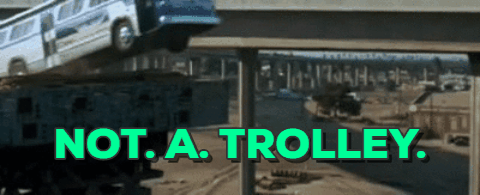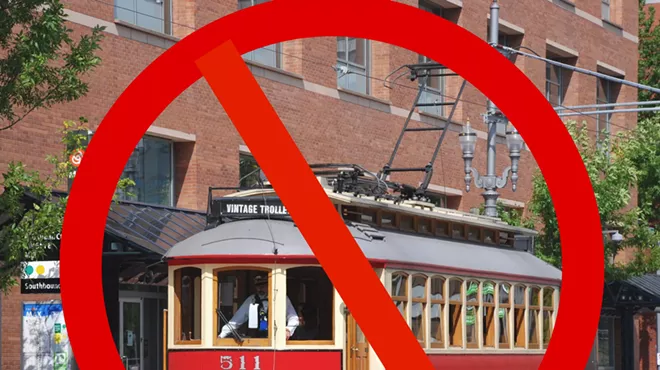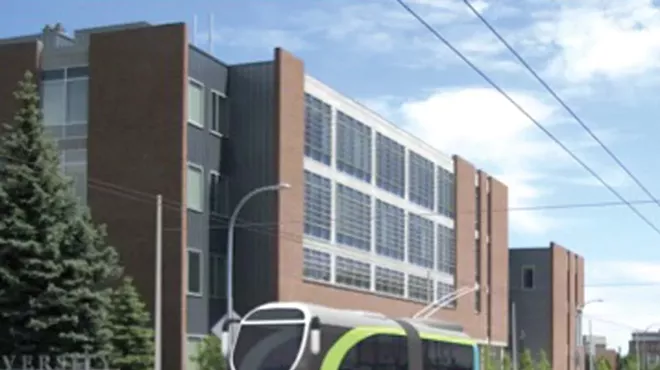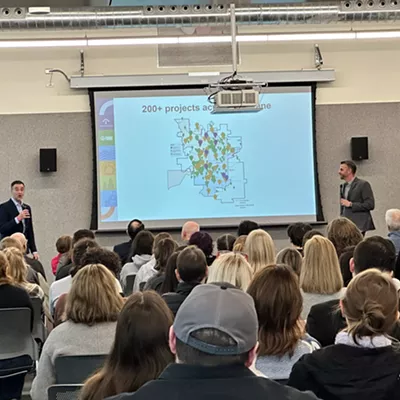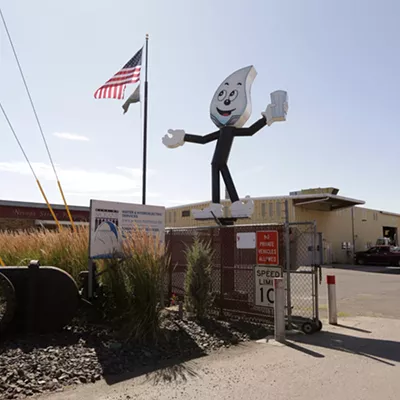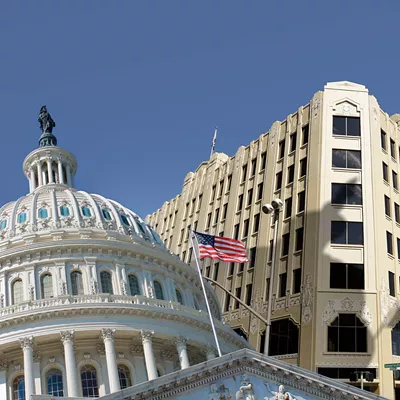Tuesday, November 8, 2016
The non-trolley Central City Line — and the rest of STA Prop 1 — makes the leap
Second time’s the charm. Spokane Transit Authority’s package itself was nearly identical to the measure that failed by an achingly close 572 votes last spring.
And so the STA board put it on the ballot again, with the same list of around 25 projects, including late-night Saturday service, service to Airway Heights, and a new route between Greenacres and the Spokane Valley Mall.
What did change, thanks to federal and state funding and more generous revenue projections, was the price tag: Instead of a 3/10ths of a percent sales tax hike, this measure proposes to start out initially at 1/10th of a percent before climbing to 2/10ths of a percent in 2019.
The difference may not seem like much, but the change was enough to persuade formerly skeptical local influencers like Greater Spokane Inc. — which did not back the measure last spring — to leap on board.
And as of Tuesday night, voters were approving the proposition with 55.4 percent of the vote, according to preliminary returns.
Another change may have played a role: The STA landed state funding and federal grants that meant the ballot measure wouldn’t pay for a dime of the $72 million construction cost of the Central City Line — the proposed high-tech, high-frequency electric bus route between Browne’s Addition and Spokane Community College. It would only pay for the operational cost, which, because the vehicle is electric, would actually be significantly cheaper. Critics shrugged these arguments aside, arguing that spending federal and state money is still spending taxpayer money.
The big TV advertisement in support of Proposition 1, however, sidestepped the entire argument: It talked about more buses, more routes, more often, but didn’t mention the Central City Line.
Instead, the pitch was nearly conservative, aimed just as much at car owners who hate potholes and traffic jams: Less traffic congestion. Less wear and tear on roads. And, yes, less air pollution.
“And more people can get to school and work, which means a stronger economy,” said the peppy voice of the ad’s announcer.
This was a strategic choice by Prop 1 campaign manager Adam McDaniel: He didn’t want to count on high turnout from Democrats in a presidential year to push the ballot measure over the top. Instead, he aimed for moderate conservatives in the moderately conservativecounty .
And, in an election that surprised everyone nationwide with the power of rural conservatives, that may have been a good move.
“One of the things that clearly worked to our advantage this time, is we had a lot more time to educate the voters about the package,” says County Commissioner Al French says. “That understanding hopefully contributed to a victory.”
The result, of course, hasn’t answered the central question: The measure’s supporters predicted that the Central City Line would be an economic boon, a lifeline pumping blood into the growing University District with its forthcoming medical school. Its critics confidently predicted that the Central City Line would be a boondoggle, a disastrous waste of taxpayer money that won’t come close to meeting its ridership goals.
Boon? Or Boondoggle?
Now we get to find out.
And so the STA board put it on the ballot again, with the same list of around 25 projects, including late-night Saturday service, service to Airway Heights, and a new route between Greenacres and the Spokane Valley Mall.
What did change, thanks to federal and state funding and more generous revenue projections, was the price tag: Instead of a 3/10ths of a percent sales tax hike, this measure proposes to start out initially at 1/10th of a percent before climbing to 2/10ths of a percent in 2019.
The difference may not seem like much, but the change was enough to persuade formerly skeptical local influencers like Greater Spokane Inc. — which did not back the measure last spring — to leap on board.
And as of Tuesday night, voters were approving the proposition with 55.4 percent of the vote, according to preliminary returns.
Another change may have played a role: The STA landed state funding and federal grants that meant the ballot measure wouldn’t pay for a dime of the $72 million construction cost of the Central City Line — the proposed high-tech, high-frequency electric bus route between Browne’s Addition and Spokane Community College. It would only pay for the operational cost, which, because the vehicle is electric, would actually be significantly cheaper. Critics shrugged these arguments aside, arguing that spending federal and state money is still spending taxpayer money.
The big TV advertisement in support of Proposition 1, however, sidestepped the entire argument: It talked about more buses, more routes, more often, but didn’t mention the Central City Line.
Instead, the pitch was nearly conservative, aimed just as much at car owners who hate potholes and traffic jams: Less traffic congestion. Less wear and tear on roads. And, yes, less air pollution.
“And more people can get to school and work, which means a stronger economy,” said the peppy voice of the ad’s announcer.
This was a strategic choice by Prop 1 campaign manager Adam McDaniel: He didn’t want to count on high turnout from Democrats in a presidential year to push the ballot measure over the top. Instead, he aimed for moderate conservatives in the moderately conservative
And, in an election that surprised everyone nationwide with the power of rural conservatives, that may have been a good move.
“One of the things that clearly worked to our advantage this time, is we had a lot more time to educate the voters about the package,” says County Commissioner Al French says. “That understanding hopefully contributed to a victory.”
The result, of course, hasn’t answered the central question: The measure’s supporters predicted that the Central City Line would be an economic boon, a lifeline pumping blood into the growing University District with its forthcoming medical school. Its critics confidently predicted that the Central City Line would be a boondoggle, a disastrous waste of taxpayer money that won’t come close to meeting its ridership goals.
Boon? Or Boondoggle?
Now we get to find out.
Tags: election 2016 , News , Image

